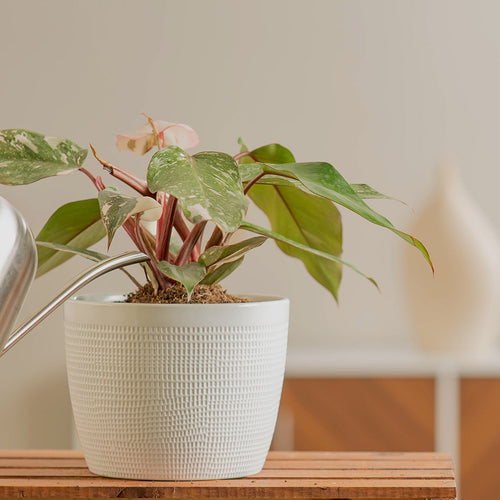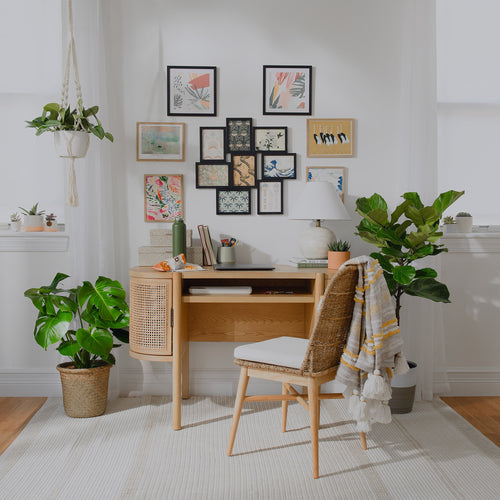When it comes to creating a cleaner, safer environment, it’s hard to know what just one person can do. But there are things. And you can do them as close as your own backyard. Here are 10 easy things to do this spring (or anytime) to celebrate and sustain the health of the planet we call home.
1 Start a compost pile
A compost pile is a way for you to recycle yard and kitchen waste (think weeds and grass clippings from outdoors and banana peels, onion tops, and other vegetable refuse from cooking at home). Not only do you recycle, buy when these green materials break down, they create a wholesome garden fertilizer that you can use on your garden or in your containers. Compost adds natural nutrients to garden soil, which grows more lush and beautiful plants without chemicals. Read more about composting here.
 2 Grow your own food (or at least some of it…)
2 Grow your own food (or at least some of it…) You’ve probably discovered the glories of herbs in the dishes you are making at home. Fresh herbs, such as rosemary, lavender, and thyme, are super easy to grow. All they need is a sunny spot (6 to 8 hours of direct sun a day) and well-drained soil. Water your herbs whenever the soil feels dry to the touch, but don’t over do it. Most herbs are native to Mediterranean climates so naturally require less water than most vegetables or fruits. You can also harvest herbs whenever you need them in the kitchen. That’s why it’s a good idea to pot some up near your kitchen door.
3 Resist using herbicides and pesticides
Avoid using pesticides and herbicides in your garden as often as you can. These products can hurt both pollinating insects (such as butterflies), beneficial insects, and soil-borne creatures that help break down organic matter for your plants. Instead of using herbicides, cover your garden soil with a thick mulch of shredded bark, pine needles, or compost. Not only will the mulch prevent weeds from sprouting, it will also improve your soil as it decays. And if insect pests attack, try organic techniques to keep them at bay. Often hand picking is a quick and easy way to remove larger insect pests such as caterpillars. And smaller pests can generally be easily removed by spraying with an organic soap-based solution. And finally, if you see insect damage, try to figure out the identity of the culprit before you are tempted to spray your garden willy nilly. You want to target the problem bug, not kill everything in sight. Plus, you can save money when gardening by avoiding pesticide use.
 4 Plant a butterfly/bird garden
4 Plant a butterfly/bird garden Birds, bees, and butterflies will flock to your garden if you provide a haven designed just for them. All of these creatures will help pollinate your flowers and vegetables as well as adding color and action to your backyard. For butterflies, be sure to add plants that provide food for the young as well as nectar for the adult. Hummingbirds will visit if you grow nectar-rich, tubular flowers such as honeysuckle, salvia, hyssop, petunia, and penstemon. Bees aren’t fussy, but they too prefer nectar rich blooms of most any type. Read more about gardening for pollinators.
5 Save water with a rain barrel
One of the best ways to capture Nature’s natural bounty is with a rain barrel. A rain barrel gathers rainwater that can be used for indoor and outdoor watering. All you have to do is connect your rain barrel to your home’s downspouts and every time it storms you’ll collect enough moisture to keep all your plants hydrated. Plus, rainwater, unlike water from the tap, does not contain chlorine or other chemicals added for human needs so it’s better for your plants. See this clever rain chain.
6 Fill your home with plants
Your indoor environment is just as important (or maybe even more) as your outdoor spaces. That’s because our modern homes are sealed tightly, allowing gasses from carpeting, paint, laundry products, and cleaners to build up in the atmosphere. But if you add a variety of indoor plants to your home, they’ll not only help provide fresh air they’ll also make you feel better by adding beauty and reducing stress. They will also make you perform better by boosting cognition, concentration, and memory. See how houseplants make your home more comfy.
7 Plant a tree or shrub
Probably the number one thing you can do to improve the environment is to plant a tree or shrub. In just one year, a mature tree can remove up to 48 pounds of carbon dioxide from the atmosphere. Trees and shrubs will also enrich the soil, create cooling shade, minimize runoff, and provide food and shelter for a wide range of wild creatures. A well placed tree or shrub border will also lower the heating and cooling costs of your home. And of course, trees and shrubs will provide year-round beauty to your landscape.
8 Reduce your lawn with ground covers or perennials
Replacing your lawn (or significant parts of it) with ground covers or perennial flowers is a great way to reduce your environmental footprint. Many people don’t realize that lawns take a lot of resources to maintain good health. They need regular feeding with chemical fertilizers, frequent watering, and constant mowing. Lawns are an artificial creation of humans and take more than their fair share of resources. So, instead of spending your weekends trudging behind a mower, why not carve out some flower beds and fill them with combinations of perennial flowers and ground covers. See how to plant ground covers.
9 Think small
Even the tiniest garden can have a big impact on the environment. Look for out-of-the way nooks and crannies in your landscape where you can create mini-gardens packed tightly with annuals, perennials, and tropicals. There are lots of plants that are small-scale, so they'll fit in any garden. Or, cluster a group of containers together on a deck, patio, or balcony. You’ll be surprised at how many creatures fly in for a visit and how much happier you’ll feel with just the smallest bit of life nearby. Or, look for unexpected places where you can tuck in a few plants such as the strip of ground between the sidewalk and the street or even around a mailbox. Anything you can plant, no matter how small will go a long way to improving our world.
 10 Add water
10 Add water You’ll be surprised at how much life happens around a fountain or small pond. Adding a water feature to your garden will not only look and sound amazing, it will provide a calm, stress-reducing place for you to relax. Water, especially if it’s trickling, will also attract a host of feathered visitors that will stop in to bathe and maybe eat a few pesky insects while they’re at it. Frogs and toads will also come along for a drink and a quick meal of any slugs or snails they find munching on your treasured perennials.

















